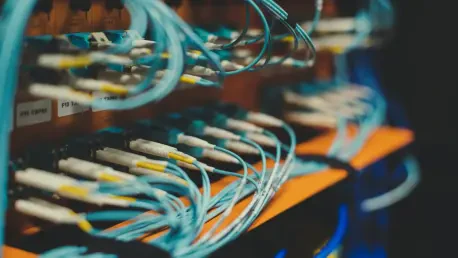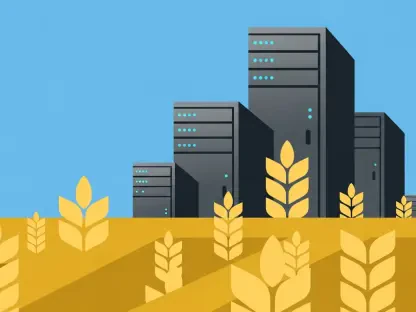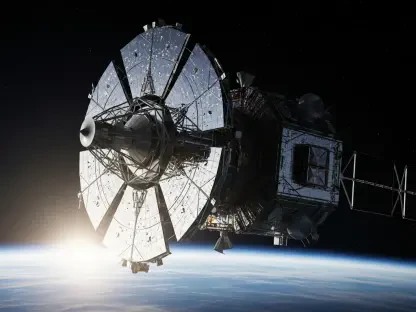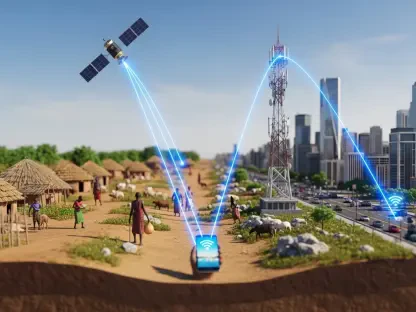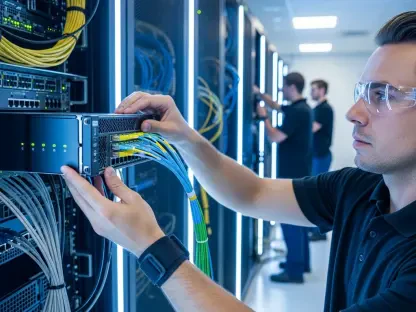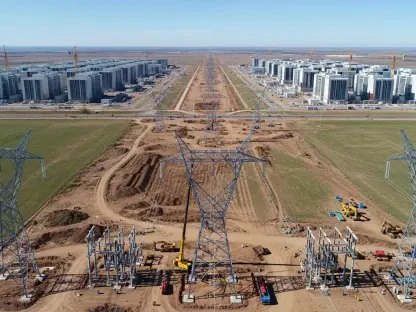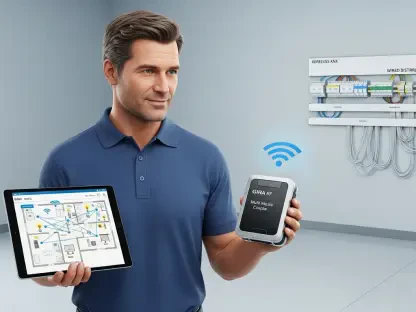The surge in demand for high-speed internet and advanced telecommunications infrastructure has propelled the outdoor fiber optic cables market into a period of rapid expansion. Fueled by the deployment of 5G technologies and the increasing necessity for robust data transmission, this sector is projected to experience substantial growth, with market forecasts indicating a compound annual growth rate (CAGR) of 9.02% from 2025 to 2032. By tapping into the unparalleled capabilities of fiber optics, global connectivity is poised for a transformative leap, reshaping communication landscapes across urban and rural regions alike.
Rising Demand for High-Speed Internet
The Influence of 5G and Digital Services
As the world becomes increasingly digitalized, the demand for high-speed internet continues to escalate. Fiber optic cables play a critical role in this transition by offering reliable and rapid data transmission. The implementation of 5G networks has heightened the need for these cables, as they are essential to meeting the technology’s stringent requirements for low latency and high bandwidth. Unlike traditional copper-based systems, fiber optics support faster speeds and greater data capacity, making them indispensable for modern telecommunication demands. This technological advantage drives a shift towards fiber optics on a global scale, as they align well with the evolving digital services ecosystem.
The transition to digital services extends beyond mere internet usage; it also encompasses cloud computing, IoT, and edge computing, each necessitating fast and reliable connectivity. Fiber optic cables, with their robust performance and durability in diverse environments, ideally address these needs, fostering seamless connections across long distances. Governments and private sectors are increasingly investing in scalable fiber optic infrastructure to accommodate the growing data consumption and service demands. This commitment to expanding technology facilitates real-time applications and enhances connectivity, significantly impacting industries worldwide.
Bridging the Digital Divide
One of the most significant challenges in achieving widespread high-speed internet access is bridging the digital divide. This divide is most pronounced in rural or remote areas where infrastructure development can be costly and logistically challenging. However, outdoor fiber optic cables provide a viable solution due to their resilience against environmental factors and their capacity for direct burial, aerial, and duct installations. Additionally, government initiatives around the world aim to extend high-speed internet access to underserved communities, resulting in increased installations of fiber optic networks.
As these initiatives gain momentum, the digital divide steadily narrows, offering more people access to essential online services such as education, healthcare, and banking. The advancement in fiber optic technology not only supports economic growth but also fosters social inclusion by improving the livelihoods of rural populations. The growing emphasis on universal broadband access highlights the pivotal role of fiber optics in supporting equitable connectivity, shaping a more connected future for all communities.
Emerging Trends in Fiber Optic Deployment
Technological Advancements and Innovations
The fiber optic cables market has witnessed numerous technological advancements that enhance its capabilities and fuel its adoption. One key development is the creation of micro cables and high-fiber-count cables, both integral to supporting ultra-dense networks required by 5G. These innovations accommodate higher data loads while maintaining compact and efficient installations, addressing the spatial constraints posed by urban settings and densely populated areas. Continuous research and development within fiber optic technology propel the industry forward, offering new solutions to meet rising connectivity demands.
Moreover, fiber optic deployments also incorporate innovations such as real-time monitoring and predictive maintenance tools. These technologies improve the operational efficiency of fiber networks by providing insights into the system’s health and performance, facilitating proactive management and reducing potential downtimes. As manufacturers and service providers prioritize the integration of smart technologies, the reliability and functionality of fiber optic infrastructures are significantly enhanced, benefiting both enterprises and consumers alike.
The Role of Smart Infrastructure
The rise of smart cities and connected infrastructures places a heightened demand on fiber optic networks to support real-time data transfer from IoT sensors and devices. These projects require the robust data communication offered by fiber optics to manage urban resources efficiently, from traffic systems to energy grids. Fiber optic cables are well-suited to meet these needs, delivering the high-capacity, low-latency connections essential for smart infrastructure projects. As global urbanization accelerates, so does the need for sophisticated telecom solutions, positioning fiber optics as a critical component of modern urban planning and smart city development.
The integration of fiber optics into utility grids marks another significant advancement, as utilities upgrade their communication systems to fiber-based solutions. This transition is driven by the pursuit of more accurate, real-time data for optimizing energy distribution and consumption. Fiber optics enable utilities to better manage infrastructure, ultimately leading to improved service delivery and resource utilization. The confluence of smart infrastructure and fiber optic innovation underscores the interdependence of technology and urban development, reinforcing the vital role fiber optic networks play in shaping the cities of the future.
Regional Dynamics and Market Segmentation
Geographical Deployment Patterns
The deployment and growth patterns of fiber optic networks vary significantly across regions, influenced by factors including urbanization, regulatory frameworks, and telecom maturity. North America is a dominant player within the market, evidenced by strong broadband penetration and extensive 5G rollout supported by considerable investments in rural connectivity initiatives. In Europe, robust regulatory support and substantial investments enhance digital infrastructure development, fortifying the region’s telecommunications capabilities.
Asia-Pacific represents the fastest-growing region, driven by rapid urbanization and aggressive government-led broadband projects addressing the connectivity needs of a burgeoning population. Likewise, Latin America experiences significant growth through telecom infrastructure development and rising demand for fiber-based internet services, presenting new avenues for market expansion. Meanwhile, the Middle East and Africa are witnessing accelerated fiber optic deployments, bolstered by national development plans and smart city initiatives, which further advance the regional market presence.
Market Segmentation and Key Players
The fiber optic cables market is segmented across cable type, fiber type, deployment mode, application, and region. Among cable types, loose tube cables, tight buffered cables, and ribbon cables are prominently used, with loose tube cables favored for their flexibility and resistance to environmental factors in long-distance outdoor installations. Single-mode fibers dominate the fiber type segment, suitable for high-speed, long-haul data applications. Deployment modes include aerial, duct, direct burial, and underwater installations, with direct burial receiving attention for its cost-effectiveness and durability.
Key market players continually innovate to sustain competitive advantages, creating new opportunities within the industry. Prominent companies such as Corning Incorporated, Prysmian Group, and Nexans S.A. offer diverse fiber optic solutions aligned with global connectivity needs. Their ongoing research and commitment to technological advancements contribute significantly to market evolution, ensuring the continuous availability of cutting-edge fiber optic products and services. These developments bolster the global telecommunications landscape, setting the tone for future growth and maturity within the industry.
Future Outlook for the Fiber Optic Market
Investment and Innovation Prospects
The fiber optic cables market is poised for steady growth, as evidenced by large-scale investments and innovations that continue to reshape the telecommunications industry. Telecom giants like AT&T and Verizon lead the investments in network infrastructure, focusing on expansive fiber rollouts to enhance service delivery and meet rising customer demands. Government-backed broadband initiatives, such as India’s BharatNet program and the European Union’s Digital Decade, rely heavily on fiber optics to achieve national connectivity goals. This strong endorsement from both government and private sectors fortifies the market’s prospects, driving its expansion further.
Technological advancements in fiber cables, particularly the development of eco-friendly solutions, align with global trends emphasizing sustainability and environmental responsibility. Innovations such as RoHS-compliant cables highlight the market’s responsiveness to ecological concerns while maintaining high performance. These developments not only ensure the market’s continued relevance but also position fiber optics as integral to future advancements within communications and technology sectors. As more stakeholders recognize the strategic significance of fiber optics, the industry anticipates ongoing investment, innovation, and collaboration.
Expanding Role in Global Connectivity
The rising demand for high-speed internet and cutting-edge telecommunications infrastructure is driving significant growth in the outdoor fiber optic cables market. This expansion is largely fueled by the rollout of 5G technologies and the increasing demand for reliable data transmission. The market is expected to grow at a compound annual growth rate (CAGR) of 9.02% from 2025 to 2032. Fiber optics offer unparalleled capabilities in transmitting data swiftly and with high fidelity, helping to advance global connectivity. This technological advance is reshaping communication landscapes not only in bustling urban centers but also in remote rural areas. As more regions connect with high-speed fiber optic networks, we anticipate improvements in various sectors, including education, healthcare, and business communications.
This shift is poised to enhance how industries operate, pushing productivity and efficiency to new heights. Additionally, as more households gain access to high-speed internet, we can expect a transformative impact on everyday life, enabling seamless streaming, telecommuting, and online learning opportunities. Overall, the surge in fiber optic deployment presents a pivotal opportunity to bridge the digital divide, enhancing inclusivity and enabling a more connected world. The expansion of this market will have lasting impacts on how we interact, both locally and globally, fostering innovation and growth in multiple facets of society.
